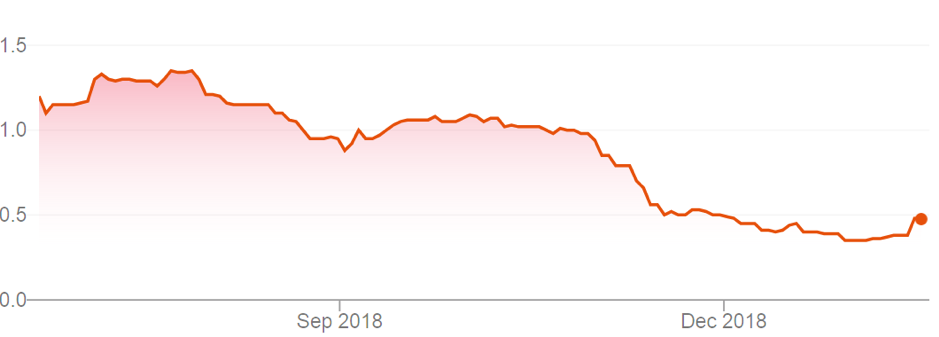Picture this: by 2030 Australians spend 10 times more on home-delivered food than they do now. Many order at least one meal online daily and some eat every meal this way.
Fewer families plan meals in advance, buy ingredients, cook dishes and eat together. Instead, they fight over which takeaway to have and pass the smartphone App around to order. Thirty minutes later, restaurant-cooked meals are delivered to their door.
Restaurants change their business model. Virtual restaurants (with no shopfront) emerge and old suburban factories are converted into industrial kitchens. Streets are full of busy couriers carting food, drink and other items in the on-demand economy.
Supermarkets, too, change their business model. Fewer people cooking at home reduces demand for fresh ingredients. Supermarkets sell more takeaway food and pre-prepared meals, and integrate that service into online food-delivery platforms.
For younger generations, complex meal-preparation tasks are outsourced and cooking becomes a basic or redundant skill – much like sewing. Home design changes because fewer people need elaborate kitchens and more food is eaten in front of a screen.
This predication is not as crazy as it sounds. Investment bank UBS last year estimated the global food-delivery sales market will grow from about US$35 billion to US$365 billion by 2030, a tenfold increase in the value of home-delivered food in little over a decade.
UBS argues most meals will be ordered online and delivered from centralised, industrial kitchens. I expect restaurants to license their brand and menu to these kitchens; food ordered from a trendy inner-city restaurant might be cooked in a suburban kitchen warehouse.
Coles this week said it is partnering with Uber for home deliveries of ready-to-eat meals. Customers, for example, could order a barbeque chicken, salad and bread rolls and have them delivered within 30 minutes, for a $5 delivery fee.
Growth in home-delivered food is obvious. Sadly, many restaurants are swamped with UberEats or Menulog orders and more focused on online deliveries than local trade. Inner-city footpaths are often full of food couriers waiting for an order. The boom gets bigger by the day.
Nobody knows how this trend will play out: I cannot imagine lots of people ordering breakfast or lunch online and having it delivered via UberEats (although some do now). Logistically, I cannot see how couriering food to millions of Australians daily could work.
But trends driving the food-delivery boom are unstoppable. Time-poor consumers are struggling to source food ingredients, cook and wash up each day. Also, as palates change, consumers want tastier, international food; meat and three vegies every night is dull.
Moreover, the boom in online food ordering and delivery is creating economies of scale that will reduce the price gap between restaurant and home-cooked meals. In some cases it is already cheaper to eat mass-produced takeaways (burgers, etc) than buy fresh ingredients.
I expect three broad categories of food consumers to emerge: “digital connoisseurs” who order most meals online or eat out; the “in-betweeners” who still cook at home and want the process to be faster, easier and tastier; and “traditionalists” who buy ingredients and cook most meals.
The “inbetweeners” is an interesting market. Witness the increase in supermarket shelf space for pre-made meals that consumers assemble and cook at home. Or David Jones’ renewed push into pre-made, gourmet food. Or growth in low-calorie, home-delivered brands such as Lite n’ Easy that are convenient and surprisingly tasty.
And now to Marley Spoon
These trends bring me to Marley Spoon, an ASX-listed company that provides kit meals. The emerging company combines ingredients with recipes and packages and delivers them to customers. Some friends use Marley Spoon and recommend it.
Pre-prepared meals are a boom market. The US market for fresh-food meal kits increased from US$1.5 billion in 2016 to US$4.65 billion in 2017, according to Euromonitor International. The US meal kits market is expected to be worth US$11.6 billion by 2022.
If this growth pans out, the US market will increase almost eightfold in six years, albeit off a low base compared to the US$6.1-trillion global grocery market and US$1.4-trillion global full-service restaurant market. But meal kits will still be a multi-billion-dollar market.
Based in Berlin, Marley Spoon had 125,000 active customers in the first half of FY18, more than double a year earlier. They ordered 922,000 meals and generated first-half revenue of €9.5 million for Marley Spoon.
Marley Spoon has a clever business model. It sources produce after customers choose meals, meaning it does not have to hold large food inventories and has far less waste than supermarkets. It keeps 100-150 stock-keeping units and makes the food through a small group of global manufacturing centres. This streamlined supply chain helps its profit margins.
As customer numbers grow, Marley Spoon benefits from economies of scale in food preparation. Its profit margins are increasing in Australia as the cost of goods sold per food kit falls. Customer acquisition costs also fall as Marley Spoon brand recognition rises.
Branding is critical. There is no obvious barrier to entry or sustainable competitive advantage in pre-prepared meals. Coles’ move into home-delivered, ready-to-eat meals reinforces the competitive threats as new entrants target the food needs of time-poor consumers.
Marley Spoon needs to be top-of-mind for customers who want interesting, fresh pre-prepared meals rather than more basic meals that supermarkets will probably provide. If Marley Spoon can build that recognition it will have a valuable headstart in a fast-growing sector.
The market, however, is not convinced. Marley Spoon listed on ASX in mid-2018 through an initial public offering (IPO), raising A$70 million at A$1.42 per Chess Depositary Interest (CDI). The company’s market capitalisation at the IPO was almost $200 million.
Marley Spoon hit a 52-week low of 34 cents late last year before rallying this year to 56 cents, making it among the worst-performed IPOs from 2018. It is now worth $66 million. Marley Spoon shares tanked after its guidance of higher-than-expected losses in 2018, largely because of increasing marketing investment.
The recently released fourth-quarter update was better. It showed continued good growth in customer acquisition and revenue, and a slightly higher loss compared to third-quarter guidance. A capital raising to ease balance sheet concerns is another headwind for the company.
In some respects Marley Spoon is like an early-stage tech company. It is doubling customers and revenue each year but spending a truckload to do so. Losses are high because the company is racing to build a dominant position in its industry and beat its competitors.
The bulls will see Marley Spoon as a case of “short-term pain for long-term gain”. Like the accounting software provider Xero, Marley Spoon is increasing its marketing investment in its formative years to capitalise on strong customer and revenue growth. If the strategy works, the company will be worth a lot more in a five years than it is today.
Bears will see Marley Spoon as yet another IPO that had an inflated valuation and hyped prospects. Big earning downgrades within a year of listing can be fatal because they destroy confidence in IPOs and their prospectus. Marley Spoon needs to restore market confidence.
Ultimately, price matters most. At 56 cents, Marley Spoon trades on an enterprise value (EV)-to-sales ratio of 0.59 times for CY19, on Macquarie numbers, and a 27% valuation discount to the nearest listed peer, Hellofresh. Macquarie values Marley Spoon at $1.27 a share.
Care is always need with “house-broker“ forecasts: Macquarie was joint lead manager to the Marley Spoon IPO. But it is interesting to see Macquarie maintain the faith and a 12-month price target that suggests Marley Spoon is worth more than double its current price.
I am not as bullish and suspect the market will need to see Marley Spoon break even on operating cash flow before a sustained stock rerating occurs. The company had negative cash flow of just over €9 million in the first-half of FY2018. Breakeven should not be too far away.
In spite of its lacklustre share price, Marley Spoon has a valuable position in a growth market and is genuinely global, with operations in Australia, the United States and Europe. Most micro-cap companies would kill to double customer numbers and revenue growth each year, and have a growing footprint in key offshore markets.
Marley Spoon needs a more investor-friendly approach to restore market confidence, at least in the short term. Kudos to companies that plough cash into the business to keep growing it, but Marley Spoon’s options will be limited if the share price does not stabilise and head higher. It needs to move to positive cash flow and stem the losses quickly.
If it can do that, the share price is ripe for a rerating. AustralianSuper emerged as a substantial shareholder in December 2018 and price gains this year suggest the smart money sees value. The stock looks cheap, but valuing companies such as Marley Spoon is complicated.
As a micro-cap, Marley Spoon suits experienced investors who can tolerate risk. I usually avoid IPOs that cut guidance within a year of listing because it suggests the company is unreliable.
In Marley Spoon’s case, the earnings downgrade was partly because of a decision to reinvest more for growth. It was one that should pay off in coming years if the company can capitalise on the boom in kit meals and become a dominant provider in a global growth market.
Chart 1: Marley Spoon

Source: ASX
Tony Featherstone is a former managing editor of BRW, Shares and Personal Investor magazines. The information in this article should not be considered personal advice. It has been prepared without considering your objectives, financial situation or needs. Before acting on information in this article consider its appropriateness and accuracy, regarding your objectives, financial situation and needs. Do further research of your own and/or seek personal financial advice from a licensed adviser before making any financial or investment decisions based on this article. All prices and analysis at 30 January 2019.

